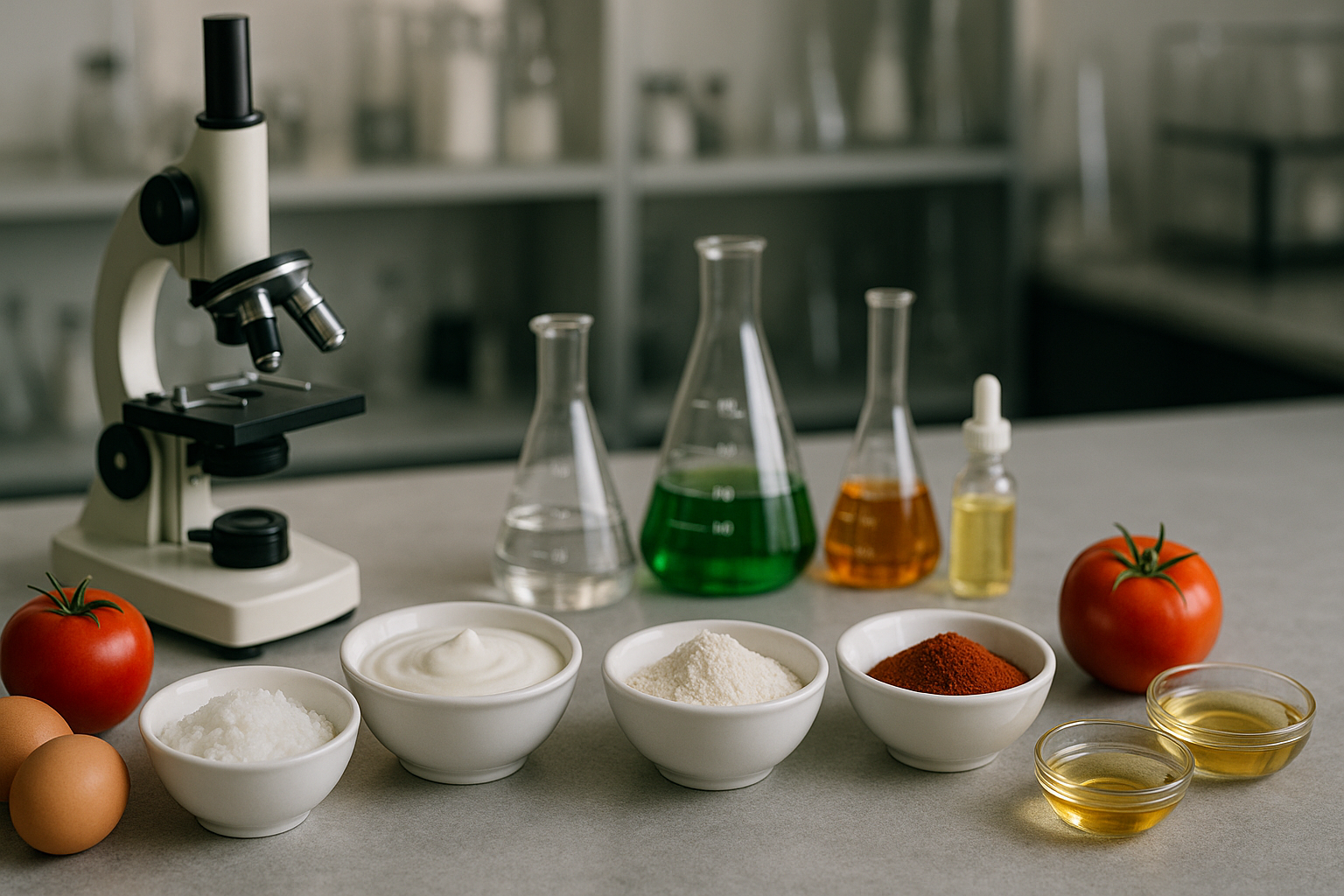Trending searches
Trending searches

Hydrocolloid: Guar Gum
SUBSCRIBE TO OUR BLOG
Promotions, new products, and recipes.
Guar Gum: The Natural Thickener from the Guar Bean
Guar Gum, a polysaccharide derived from the seeds of the guar plant (Cyamopsis tetragonoloba), has been recognized for its remarkable thickening, stabilizing, and emulsifying properties. But what's the scientific foundation behind this hydrocolloid's behavior, and how has it been integrated into the culinary world?
Historical Overview
The guar plant has been cultivated in India and Pakistan for centuries, with its seeds being the primary focus. The commercial extraction and production of guar gum began in the mid-20th century, introducing it to the global market1.
The Molecular Science of Guar Gum
Guar gum is primarily a galactomannan, consisting of linear chains of mannose sugars with galactose side branches2. Its high molecular weight and ability to form hydrogen bonds give it its unique water-binding and thickening properties.
Extraction and Refinement
The extraction process involves removing the seed's husk, followed by milling to obtain the split. The split is then ground to a fine powder, yielding the final guar gum product3.
A Multifaceted Ingredient
Guar gum's multifunctionality is evident in its diverse applications:
-
Food Industry: Used as a thickener, stabilizer, and emulsifier in various food products4.
-
Pharmaceuticals: Employed as a binder in tablet formulations and as a thickener in liquid formulations5.
-
Cosmetics: Incorporated in products for its conditioning and viscosifying properties6.
Guar Gum in Culinary Creations - Proportions
Guar gum is a potent thickener, so only small amounts are needed:
-
Baked Goods (like Breads or Cakes):
- Proportion: 0.35% to 0.5% of the total weight7.
- Purpose: Improves dough yield, texture, and shelf life.
-
Dairy Products (like Ice Cream or Yogurt):
- Proportion: 0.1% to 0.2% of the total weight8.
- Purpose: Prevents ice crystal formation in ice creams and improves texture in yogurts.
-
Sauces and Dressings:
- Proportion: 0.1% to 0.5% of the total weight9.
- Purpose: Acts as a thickener and stabilizer.
-
Soups and Broths:
- Proportion: 0.1% to 0.3% of the total weight10.
- Purpose: Provides a richer consistency.
-
Beverages:
- Proportion: 0.1% to 0.2% of the total weight11.
- Purpose: Provides a thicker, creamier mouthfeel.
Conclusion
Guar gum, with its roots in ancient agriculture, showcases its prowess in thickening and stabilizing a myriad of formulations. Its pivotal role across industries, especially in gastronomy, underscores its versatility and significance. As the nexus between culinary arts and food science strengthens, Guar Gum's prominence is poised to ascend.
For further reading: Gum Arabic
References:
Footnotes
-
Whistler, R.L., & Hymowitz, T. "Guar: Agronomy, Production, Industrial Use, and Nutrition." Purdue University Press, 1979. ↩
-
BeMiller, J.N. "Carbohydrate Chemistry for Food Scientists." AACC International Press, 2019. ↩
-
Mudgil, D., et al. "Guar gum: processing, properties and food applications—A Review." Journal of Food Science and Technology, 2014. ↩
-
Davidson, R.L. "Handbook of Water-Soluble Gums and Resins." McGraw-Hill, 1980. ↩
-
Aulton, M.E., & Taylor, K.M.G. "Aulton's Pharmaceutics: The Design and Manufacture of Medicines." Elsevier Health Sciences, 2017. ↩
-
Schramm, L.L. "Encyclopedia of Emulsion Technology." Marcel Dekker, 1983. ↩
-
Guarda, A., et al. "Different hydrocolloids as bread improvers and antistaling agents." Food Hydrocolloids, 2004. ↩
-
Goff, H.D., & Hill, A.R. "Ice Cream." Springer US, 1996. ↩
-
Imeson, A. "Food Stabilisers, Thickeners and Gelling Agents." Wiley-Blackwell, 2009. ↩
-
Dickinson, E. "Hydrocolloids at interfaces and the influence on the properties of dispersed systems." Food Hydrocolloids, 2003. ↩
-
Moore, M.M., et al. "The effects of hydrocolloids on the quality of gluten-free bread." Food Research International, 2008.


|
About the Author Ed is the founder of Cape Crystal Brands, editor of the Beginner’s Guide to Hydrocolloids, and a passionate advocate for making food science accessible to all. Discover premium ingredients, expert resources, and free formulation tools at capecrystalbrands.com/tools. — Ed |
Related Posts

Can Saffron Improve Mood and Libido? A Natural Approach to Wellness

The Most Powerful Food Science Questions Journalists Are Asking Today

Inside the Pumpkin Latte: What’s Really in Your Cup (and a Better Homemade Version)
Enjoyed this post? Subscribe to The Crystal Scoop
Food-science tips, ingredient know-how, and recipes. No spam—unsubscribe anytime.
- Choosing a selection results in a full page refresh.
POLICY PAGES
QUICK LINKS
Guar Gum
Cape Crystal Brands, 18 Bank St., Suite 1, Summit NJ 07901.
- Phone: +1 908-273-5600
- Email: info@capecrystalbrands.com
- Tax ID: 26-2477626000
- FDA Facility Registration # 16980627550
- Kosher Certified: OKosher.org
Country/region
© 2025, Cape Crystal Brands | Sitemap
